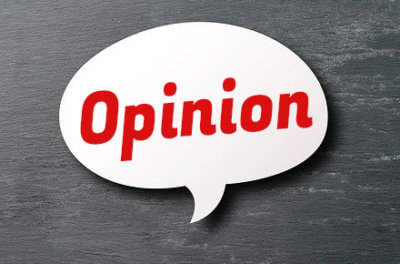Fish and Wildlife board appointments are fishy
Once upon a time, human behavior obeyed an equivalent of Newton’s third law — for every action there is an equal and opposite reaction. In other words, when someone stepped on your foot and you said, “Ouch!” they reacted by saying, “I’m so sorry. I didn’t see your foot there.” Nowadays, with everything going off the rails, it’s really no surprise that human interactions are less and less bound by etiquette or fair play.
 And so go Governor Scott’s Fish and Wildlife board appointments. From the governor who likes to talk about everyone working together, there’s been nothing resembling fair play in this instance. What there has been is political doublespeak. He conveniently ignored the public’s massive protest over his Fish and Wildlife board appointments, seemingly oblivious to the frequent criticisms of cronyism, lack of transparency and a good ol’ boys’ club mentality.
And so go Governor Scott’s Fish and Wildlife board appointments. From the governor who likes to talk about everyone working together, there’s been nothing resembling fair play in this instance. What there has been is political doublespeak. He conveniently ignored the public’s massive protest over his Fish and Wildlife board appointments, seemingly oblivious to the frequent criticisms of cronyism, lack of transparency and a good ol’ boys’ club mentality.
The public’s reaction has been so loud over the last five or six years that legislators have introduced bills seeking to change the appointment process. But from the governor … crickets. He is brazenly ignoring the majority of Vermonters to pander to a privileged special interest group. He appears resolutely uninterested in modernizing the Fish and Wildlife board that makes public policy decisions on our shared public “resource” (wildlife) without broad representation of the Vermont public. The good ol’ boys club is alive and well, and if you’re interested in wildlife protection, you’re not invited.
The Fish and Wildlife board consists of 14 members, one from each county in the state. Each board member serves for a six-year term. Thirteen of the 14 members are white men and all are avid members of the hunting/trapping/angling community. One of the latest appointees included his NRA membership on his application, so we can add that to the list of “assets” that the governor looks for.
Typically, when a board seat is nearing expiration, Protect Our Wildlife contacts the governor’s office to ask that consideration be given to candidates that can provide a fresh perspective to offer more balance to the board. For example, a recent applicant is a retired environmental sciences teacher who is not opposed to hunting but would like to see some restrictions on certain activities, such as trapping and hounding. Another applicant is a wildlife rehabber who also supports hunting, but with some exceptions.
Both of these applicants would have been excellent additions because their perspectives would have offered some balance to the current echo chamber of interests and opinion. Neither of these applicants even received an acknowledgement, yet hunters are appointed who don’t even fill out an application.
What’s more, there’s no requirement to disclose potential conflicts of interest. There have been concerns in the past over certain board members not recusing themselves from votes that might have benefited them personally. And new appointments seemingly come out of nowhere, no doubt from some offline conversations that are never publicly disclosed. Nevertheless, these appointees are making public policy. The only reason the public even knows anything about the Fish and Wildlife board appointment process and the appointees is because Protect Our Wildlife submits public records requests.
Bill S.129 was a modest bill that sought incremental change that would have modernized the Fish and Wildlife board to include a broader spectrum of interests and voices and changed its role to an advisory capacity. S.129 was not successful, in large part because Fish and Wildlife senior staff opposed it. Why doesn’t the commissioner want his biologists to have the final say on regulations? Why give uncredentialed, volunteer Fish and Wildlife board members the authority to make policy? The answer is simple: It is because wildlife “management” has less to do with what’s best for wildlife and more to do with what’s best for hunters and trappers.
The whole wildlife governance paradigm is mired in a 1950s mindset that is bent on perpetuating destructive activities like the use of leghold traps and hounds to run down bears, even in the face of tremendous new challenges and threats to our wildlife and wildlands. We won’t see any positive changes for bobcats, bears, beavers and other wildlife until Vermont wildlife advocates truly have a say, and that starts with us having a literal seat at the decision-making table: the Fish and Wildlife board.
(Lisa Jablow of Brattleboro is a board member of Protect Our Wildlife.)

